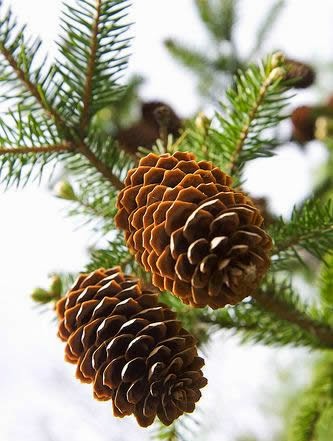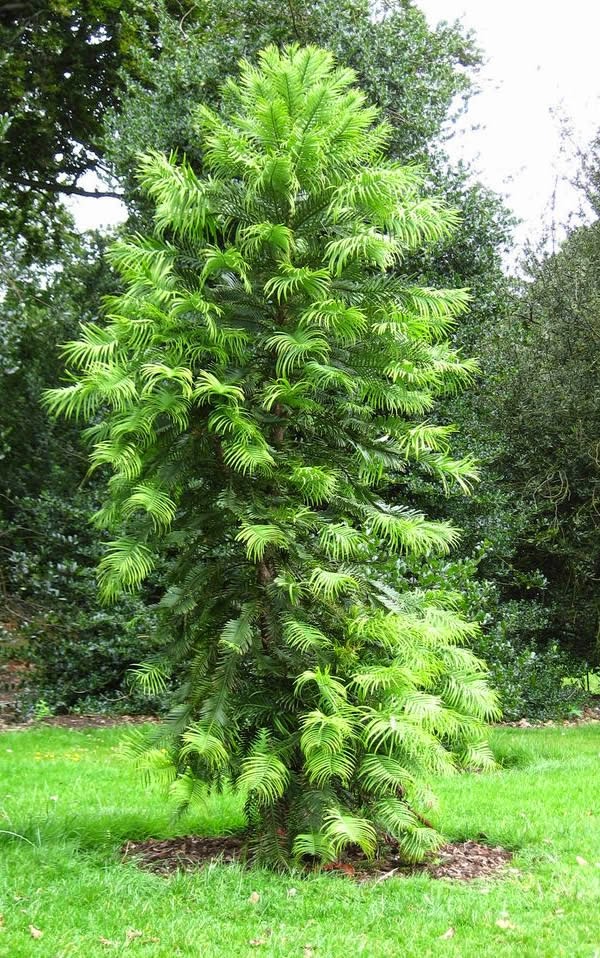 |
| Conifers |
The conifers, which are woody plants consisting mostly of evergreen trees, make up the phylum Coniferophyta, one of four phyla of gymnosperms that have living representatives. The word “conifer”means cone-bearing. Most conifers bear their reproductive structures in cones.
With 50 genera and 550 of the 700 known gymnosperm species, the phylum Coniferophyta includes the bulk of the gymnosperms. Coniferophyta is also the most widespread and, in terms of numbers of individual trees, the most abundant of the gymnospermphyla.
The abundance and economic and ecological importance of the Coniferophyta are out of all proportion to the number of species, which does not begin to compare to the 235,000 species of angiosperms (phylum Anthophyta).
  |
Conifers grow over almost the entire world. They are especially abundant in northern temperate and boreal regions. They predominate in the taiga, or northern boreal forest, which covers immense stretches of northern North America and northern Eurasia.
They dominate that forest by virtue of large numbers of individuals of only about a dozen species,mainly of spruce, fir, and larch. They show greater diversity in mid latitude, mountain forests of the Northern Hemisphere. Conifers also occur in cool mountain areas of the tropics.
In temperate regions of the Southern Hemisphere, they are widespread but less dominant than in the north. Junipers and pines are the most wide-ranging conifers, occurring across the northern continents and into the tropics. In the Southern Hemisphere, the most widely distributed conifer genus is Podocarpus.
Due to their abundance and wide range, their typically arboreal habit, and their stem structure, conifers are the only gymnosperms that yield timber on a commercial scale. They are the source of all of the world’s softwood timber and nearly half of its total annual lumber supply.
A Long Fossil Record
The oldest known conifer fossils date to the late Carboniferous period of the Paleozoic era, some 300 million years ago. The earliest known angiosperms are less than half this old.
Conifers diversified greatly during the Paleozoic’s relatively dry, cold Permian period (290-245 million years ago), which followed the Carboniferous. The drought-resistant, needlelike leaves characteristic of many modern conifers may have evolved during that dry period.
The modern families of conifers began to differentiate in the Mesozoic era (245 million to 65 million years ago). Conifers were the dominant vegetation during much of that era.
They gradually gave way to the angiosperms, which achieved worldwide dominance by about ninety million years ago, during the Cretaceous period of the Mesozoic, and remain dominant today. In the early Tertiary period of the Cenozoic era, which dawned about 66 million years ago, a diverse coniferous flora covered large areas of the Northern Hemisphere.
Vegetative Features
Conifers have certain notable vegetative characteristics. For example, many, though not all, of them have needlelike leaves, and such leaves occur only in conifers. Some conifers have scalelike leaves, and a few have bladelike ones.
The stems and roots of conifers are also note worthy, resembling the woody eudicots and magnoliids of Anthophyta in producing a dense mass of secondary xylem—that is, wood.
Reproductive Characteristics
In conifers, the ovules, which contain the eggs and eventually ripen into seeds, are not enclosed in ovary tissues within flowers as they are in the angiosperms.
Instead, like other gymnosperms, conifers have naked ovules. These ovules are borne on scales that are arranged spirally along the axes of cones. Due to a complex evolutionary history, the structure of these cones is compound rather than simple.
 |
| Reproductive Characteristics |
In addition to ovulate, or female, cones, conifers produce male cones, which are smaller, shorter-lived, and generally less woody. The axis of a male cone bears reduced leaves, each with two pollen sacs on the undersurface. The pollen grains formed within the sacs contain the immature sperm. In most conifers, cones of both genders are present on the same tree.
Although gymnosperms other than conifers may produce cones, conifers are distinctive in combining simple pollen cones with compound ovulate cones. The yews (genus Taxus) bear their ovules singly, at the tips of branchlets, rather than in cones. The seeds that develop from these ovules are enclosed in a fleshy covering called an aril.
In the spring, the male cones of conifers release their pollen to the wind. Some of it reaches female cones, which have their cone scales widely separated to receive it.
After pollination, the female cones close their scales. Fertilization usually occurs, within the ovule, about three days to three or four weeks after pollination. In the pines, however, it is delayed for about fifteen months.
In most conifers, the mature seeds, with their contained embryos, are dispersed in the autumn of the year in which fertilization occurs. The most common dispersal agent is the wind, aided in many species by wings on the seeds.
Conifer seeds that lack wings generally depend on dispersal agents such as birds or mammals. In some pines, the cones need the heat of a forest fire to open the scales and release the seeds.
Pine Family
Of the families of living conifers, the Pinaceae, or pine family, is the largest, containing ten to twelve genera, with about two hundred species world-wide. Most of these are resin-bearing trees.
This family is the most widespread and abundant conifer family in the Northern Hemisphere and very important economically. It supplies a great deal of lumber, pulpwood, and paper products. It is also important ecologically, providing essential cover, nesting habitat, and food for many species of wildlife.
 |
| Pine Family |
Douglas firs (Pseudotsuga) and hemlocks (Tsuga) are restricted to North America and Asia. The true cedars (Cedrus) occur only in warm-temperate regions of Eurasia and northern Africa. Three genera of the pine family are restricted to China.
Pinus, the oldest genus in the pine family, arose at least 130 million years ago, in the early Cretaceous period. It grows predominantly in the Northern Hemisphere. The pines number more than ninety species, nearly half the total species of the Pinaceae.
One of the world’s oldest known plants is the bristlecone pine (Pinus longaeva), which grows in Utah, Nevada, and a small area of western California. Some bristlecone pines are about forty-six hundred years old. In contrast to other conifers, pines produce their adult needles in fascicles, or bundles. The number of needles per fascicle depends on the species.
Other Conifer Families
According to a commonly used classification system, there are seven families of conifers in addition to the Pinaceae. A notable one is the Taxodiaceae, which is today represented by widely scattered species that are the remnants of populations that were much more widespread during the Tertiary period.
Bald cypress belongs to the Taxodiaceae, as do two redwood species renowned for their size and longevity. The coast redwood (Sequoia sempervirens) grows along coastal California and Oregon, and the “big tree” (Sequoiadendron giganteum) occurs on the western slope of the Sierra Nevada mountains in California.
   |
The coast redwood is generally the taller of the two species, reaching up to 117 meters in height. The big tree, however, generally exceeds the coast redwood in total mass and can live to be several thousand years old.
Another notable member of the Taxodiacae is the dawn redwood (Metasequoia glyptostroboides). This species was first known to science only from fossils discovered in the early 1940’s. Not long afterward, the tree was found growing in China.
A more recent living-fossil find belongs to the Araucariaceae, a conifer family restricted to the SouthernHemisphere. This tree, the Wollemi pine (Wollemia nobilis), had been thought to have gone extinct fifty million years ago. Then, in 1994, a stand was found growing in Australia.
 |
| Wollemi pine (Wollemia nobilis) |
The Cupressaceae, or cypress family, includes Chamaecyparis (false cypress), Juniperus (junipers, often called “cedars” in North America), and Thuja (arbor-vitae). These plants are distributed throughout the world. Some are important as timber or ornamentals.
The Taxaceae family, which includes the yews, is widely distributed in the Northern Hemisphere. The Podocarpaceae is largely restricted to the Southern Hemisphere. The Sciadopityaceae and Cephalotaxaceae are confined to east Asia.
